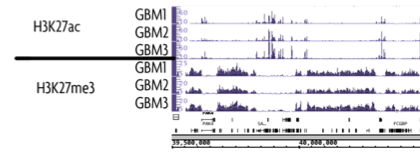Formalin-fixed paraffin-embedded (FFPE) clinical samples are a valuable resource for retrospective research. However, working with FFPE samples presents a challenge for epigenetics techniques such as ChIP. Active Motif has leveraged its epigenetics expertise to develop commercially available kits to enable ChIP from FFPE tissue for use in Next Generation Sequencing (ChIP-Seq). The FFPE ChIP assay comes in two modules, the Chromatin Preparation Kit and the ChIP-IT® FFPE II Kit.
FFPE samples are typically limited in size, lack consistency in the methods used for formalin fixation and often display degradation and loss of antigenicity due to harsh fixation conditions or prolonged storage. These factors can affect the ease of chromatin preparation and may require a certain degree of optimization. The ChIP-IT® FFPE Chromatin Preparation Kit contains specially formulated reagents and protocol guidelines to extract high quality chromatin from histological slides or tissue sections. The ChIP-IT® FFPE Chromatin Preparation II Kit has a faster workflow optimized for high quality, readily extractable FFPE samples.
The ChIP-IT® FFPE II Kit contains all the necessary reagents and protocols to enable enrichment from the limited amounts of chromatin obtained from FFPE samples. A preclearing step included in the ChIP enrichment minimizes background signal and enables cleaner data. Antibody and PCR primer controls are also provided in this kit to evaluate the successful execution of the ChIP procedure.
To learn more about ChIP-IT® FFPE II, click on the Method, Data, or Contents tabs below. To view a manual or other related documents, click on the Documents tab.
Active Motif also offers products compatible with ChIP-IT® FFPE II:
- ChIP-IT® qPCR Analysis Kit – simplifies qPCR data analysis and enables normalization across multiple sample types and experiments
- qPCR Primer Sets for a variety of gene targets and model organisms.
- ChIP-Seq Antibodies validated with our ChIP-IT High Sensitivity Kit.
In addition, our Epigenetic Services can perform FFPE ChIP-Seq and many other genome-wide data generation and analysis services for you.
| Name | Format | Cat No. | Price | |
|---|---|---|---|---|
| ChIP-IT® FFPE Chromatin Preparation Kit II | 5 rxns | 53031 | Discontinued | |
| ChIP-IT® FFPE II | 16 rxns | 53047 | Discontinued | |
ChIP-IT® FFPE II Advantages
- Obtain quality chromatin using histological slides or tissue blocks as the starting material
- Sensitive enrichment of DNA from nanogram quantities of FFPE chromatin
- Optimized reagents reduce background levels caused by non-specific binding events
- Highly robust procedure has been validated using FFPE chromatin from both normal and tumor samples with proven performance in both qPCR and ChIP-Seq analysis
- Controls are included in both the chromatin preparation and ChIP kits to help confirm results
How does the ChIP-IT® FFPE Chromatin Preparation Kit work?
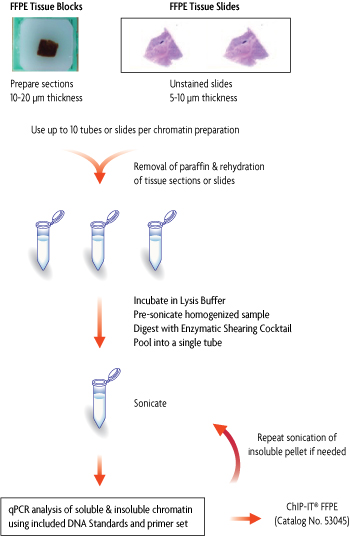
Figure 1: Schematic of chromatin preparation from FFPE slides or sections.
In ChIP-IT® FFPE Chromatin Preparation, 10-20 µm sections from FFPE tissue blocks, or 5-10 µm sections from unstained FFPE slides are used as the starting material. Up to ten tubes or slides can be used for each chromatin preparation in order to obtain sufficient yield for downstream ChIP analysis. The paraffin is removed and the tissue is rehydrated from each slide/tube. The tissue then undergoes an incubation in lysis buffer, tissue homogenization, a 30 second sonication followed by digestion with Enzymatic Shearing Cocktail. After a centrifugation step, all remaining sample is pooled into a single tube for sonication. A final centrifugation is performed and the soluble and insoluble chromatin is analyzed and quantified by qPCR.
How does the ChIP-IT® FFPE Chromatin Preparation II Kit work?
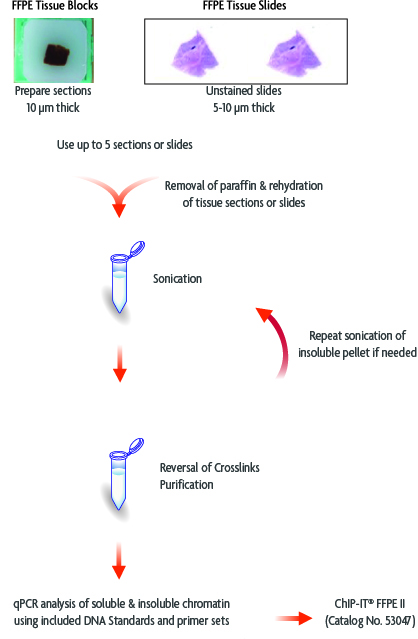
Figure 2: Schematic of chromatin preparation from FFPE slides or sections.
In ChIP-IT® FFPE Chromatin Preparation II, 10 µm sections from FFPE tissue blocks, or 5-10 µm sections from unstained FFPE slides are used as the starting material. Up to five sections or slides can be used for each chromatin preparation in order to obtain sufficient yield for downstream ChIP analysis. The paraffin is removed and the tissue is rehydrated from each slide/tube. The tissue then undergoes a sonication. A final centrifugation is performed and the soluble and insoluble chromatin is analyzed and quantified by qPCR.
How does the ChIP-IT® FFPE II Kit work?

Figure 3: Schematic of chromatin immunoprecipitation using ChIP-IT FFPE II.
The ChIP-IT® FFPE II Kit requires chromatin prepared from FFPE slides or tissue blocks using the ChIP-IT® FFPE Chromatin Preparation II Kit (Catalog No. 53031). Chromatin is pre-cleared followed by an incubation with an antibody directed against the DNA-binding protein of interest. The antibody-bound protein/DNA complexes are immunoprecipitated through the use of Protein G agarose beads and washed via gravity filtration. Following immunoprecipitation, cross-links are reversed, the proteins are removed by Proteinase K and the DNA is recovered and purified. ChIP enriched DNA can be used for either gene-specific or whole-genome analysis.
ChIP-IT® FFPE Chromatin Preparation
It can be difficult to extract chromatin from FFPE samples due to their crosslinked nature. Relatively low quality 10-year old kidney samples were processed using the ChIP-IT FFPE Chromatin Preparation Kit. To maximize the soluble chromatin available for ChIP enrichment, a subset of these samples underwent an additional round of sonication. Chromatin isolated from both rounds of sonication were combined to achieve enough input for the ChIP-IT FFPE Kit.
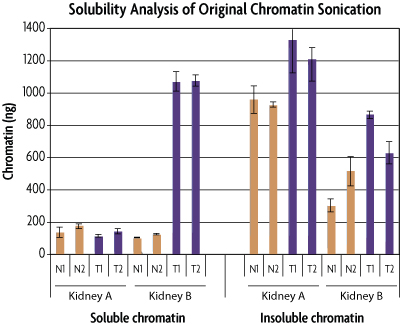
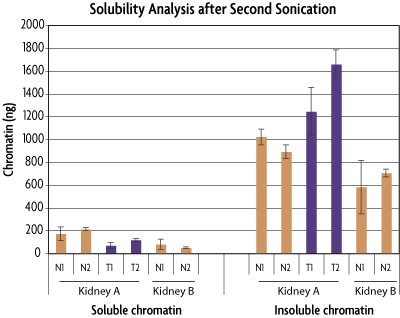
Figure 1: Analysis of chromatin solubility from human kidney FFPE samples.
Chromatin was extracted from two different case studies (A and B) from 10-year old histological sections of a human kidney with matched normal (N) and tumor (T) samples. Chromatin preparations were performed in duplicate. The soluble and insoluble chromatin fractions were analyzed by qPCR using the positive control GAPDH-2 primer set and DNA standards for quantification. The top image shows that only the tumor sample from case B had significant yields in the soluble fraction for use in downstream ChIP analysis. The insoluble pellets of the normal sample from case B and both normal and tumor samples from case A were diluted to 1 ml final volume with ChIP Buffer and subjected to a second round of sonication for 20 pulses at an amplitude of 63%. A 25 µl sample was collected from the new soluble and insoluble fractions and the input was reverse cross-linked, proteinase K treated and analyzed by qPCR using the GAPHD-2 primer set and DNA standards. Again, the solubility of the chromatin remained low. However, by combining the soluble fractions of the replicates, the chromatin yield was high enough to proceed with ChIP analysis.
ChIP-IT® FFPE Chromatin Preparation II
For high quality FFPE samples, like the glioblastoma patient-derived tumors shown below, the ChIP-IT FFPE Chromatin Preparation II Kit is an easy and quick protocol for isolation of chromatin. Following isolation, chromatin can be quantified by qPCR (as shown below) or Qubit.

Figure 2: qPCR Analysis of Glioblastoma Samples Assayed Using the ChIP-IT FFPE II Kit.
Samples of glioblastoma patient-derived xenografts were processed using the ChIP-IT FFPE Chromatin Preparation Kit. Three 5 µm curls were used for Sample GBM1, and cell pellets from dissociated tumor were used for Samples GBM2 and GBM3. Samples were reverse cross-linked, proteinase K treated and purified for analysis by qPCR using the included DNA standards and qPCR primer sets to determine the quantity and quality of the extracted chromatin. If sufficient quantities are not obtained after a single sonication, additional rounds of sonication can be performed.
ChIP-IT® FFPE II
The ChIP-IT® FFPE II Kit has the sensitivity required to work with extremely limited starting material, while producing minimal background signal, thereby enabling specific detection of the target protein of interest. The kit utilizes optimized reagents that preclear the chromatin samples and reduce background levels caused by non-specific binding events. Filtration based washes are fast and easy and result in improved consistency since there is no loss of sample material.
Due to the high sensitivity of the ChIP-IT FFPE II Kit, enriched chromatin can be used for both endpoint qPCR and NGS analysis. We recommend using the Next Gen DNA Library Kit to construct high complexity ChIP-Seq libraries.

Figure 3: H3K27ac and H3K27me3 ChIP-Seq on Glioblastoma Samples..
The Samples of glioblastoma patient-derived xenografts were used in H3K27ac and H3K27me3 ChIP-Seq to generate genome-wide profiles of this histone modification. Libraries were constructed using the Next Gen DNA Library Kit (Catalog No. 53216).
Contents & Storage
ChIP-IT® FFPE Chromatin Preparation Kit
Please note that the ChIP-IT FFPE Chromatin Preparation Kit is delivered using two separate shipping temperatures, a room temperature and a dry ice shipment. All reagents are guaranteed stable for 6 months from date of receipt when stored properly. Please confirm receipt of all reagents upon arrival and store items at the appropriate temperatures as listed below:
- RNaseA (10 mg/ml); Store at -20°C
- Proteinase K (10 mg/ml); Store at -20°C
- Protease Inhibitor Cocktail; Store at -20°C
- Precipitation Buffer; Store at -20°C
- Carrier; Store at -20°C
- Enzymatic Shearing Cocktail; Store at -20°C
- DNA Standard AM1; Store at -20°C
- DNA Standard AM2; Store at -20°C
- DNA Standard AM3; Store at -20°C
- Human Positive Control Primer Set GAPDH-2; Store at -20°C
- Lysis Buffer AM5; Store at 4°C
- Digestion Buffer AM2; Store at 4°C
- Paraffin Removal Solution; Store at RT
- ChIP Buffer; Store at RT
- 5 M NaCl; Store at RT
- TE pH 8.0; Store at RT
- DNA Purification Elution Buffer; Store at RT
ChIP-IT® FFPE Chromatin Preparation II Kit
Please note that the ChIP-IT FFPE Chromatin Preparation II Kit is delivered using two separate shipping temperatures, a room temperature and a dry ice shipment. All reagents are guaranteed stable for 6 months from date of receipt when stored properly. Please confirm receipt of all reagents upon arrival and store items at the appropriate temperatures as listed below:
- RNaseA (10 mg/ml); Store at -20°C
- Proteinase K (10 mg/ml); Store at -20°C
- Protease Inhibitor Cocktail; Store at -20°C
- Deacetylase Inhibitor; Store at -20°C
- Carrier; Store at -20°C
- PMSF; Store at -20°C
- DNA Standard AM1; Store at -20°C
- DNA Standard AM2; Store at -20°C
- DNA Standard AM3; Store at -20°C
- Human Positive Control Primer Set GAPDH-2; Store at -20°C
- FFPE ChIP Buffer; Store at RT
- 5 M NaCl; Store at RT
- TE pH 8.0; Store at RT
- FFPE Low EDTA TE; Store at RT
ChIP-IT® FFPE II Kit
The ChIP-IT FFPE Kits are shipped on dry ice and contain reagents with multiple storage temperatures inside. Please store each component at the temperature indicated below. Do not re-freeze the Protein G Agarose Beads after you have received this kit. This kit includes the following components:
- Proteinase K (10 mg/ml); Store at -20°C
- 10X PBS; Store at -20°C
- 100 mM PMSF; Store at -20°C
- Protease Inhibitor Cocktail; Store at -20°C
- Carrier; Store at -20°C
- Blocker; Store at -20°C
- Blocking Reagent AM1; Store at -20°C
- BSA (10 mg/ml); Store at -20°C
- Protein G Agarose Beads; Store at 4°C
- Histone H3K9ac rAb; Store at -20°C
- Human Positive Control Primer Set GAPDH-2; Store at -20°C
- Human Negative Control Primer Set 2; Store at -20°C
- ChIP Buffer; Store at RT
- ChIP Filtration Columns; Store at RT
- 5 M NaCl; Store at RT
- TE pH 8.0; Store at RT
- Wash Buffer AM1; Store at RT
- LiCl Buffer; Store at RT
- Elution Buffer AM4; Store at RT
- 1.7 ml siliconized tubes; Store at RT
- Low EDTA TE; Store at RT

